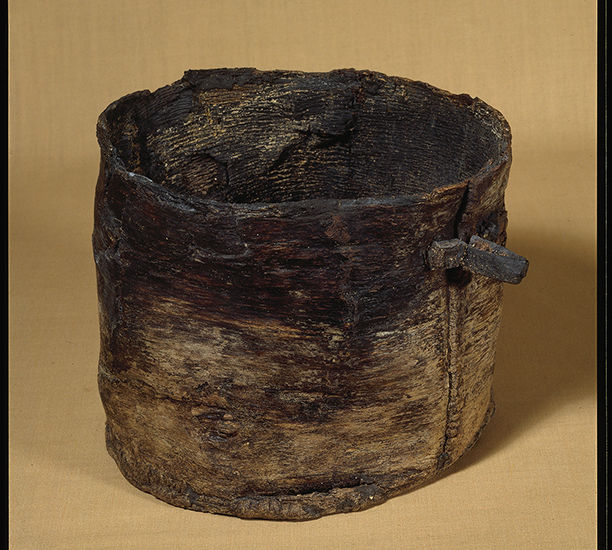New technology brews ancient ales
Courtesy of NATIONAL MUSEUM OF DENMARK
Residue analysis of ancient pottery
February 24, 2014
Beer lovers can get a taste of history thanks to new technology that takes a scientific look at some of the world’s oldest ales.
Patrick McGovern, scientific director of the Biomolecular Archaeology Project at the University of Pennsylvania Museum, is currently using beer residue extracted from ancient pottery to determine centuries-old beer recipes—in the name of science, of course.
To determine what makes up ancient ales, McGovern runs samples through an infrared spectrometer, which passes light through the residue sample and produces a chromatogram, or visible record, detailing where the chemical absorptions occur, giving clues as to what compounds are then present. According to McGovern, a sample’s compounds are separated and fed into a mass-spectrometer, which can determine the compounds’ weights. The information from the infrared spectrometer and gas or liquid chromatography-mass spectrometer allows him to identify the residue’s compounds and recreate the beers, McGovern said.
The idea of recreating beer was inspired by residue found in pottery from a 1957 excavation of the Midas Tumulus tomb in Turkey, McGovern said. The residue was studied with similar technology, which found the ancient drink that once filled the pottery consisted of a mixture of beer, wine and mead.
“When we took a look at that we just said, ‘Ew,’” McGovern said. “That’s when we got the idea to do the experimental archaeology to see if we could make such a beverage … and something you’d actually want to drink.”
The first documents in Mesopotamia, written around 3200 B.C., reveal evidence of beer, according to Tate Paulette, a graduate student at the University of Chicago.
The documents detail the delivery of brewing ingredients and the finished product, as well as nine different types of beer. While there is textual evidence that beer was produced on a large scale, there is very little archaeological evidence of breweries, Paulette said. The small amount of evidence puts residue analysis technology at the forefront because there is a limited number of residue samples to study, he said.
But that is not stopping modern breweries from taking ancient cues for their modern brews.
McGovern worked with Dogfish Head Brewery in Milton, Del. to imitate the antique beers using modern equipment.
“The methods of micro-brewing today have a huge similarity to what was done in ancient times,” McGovern said. “So we don’t necessarily have to use ultra-primitive methods.”
However, Great Lakes Brewing Company in Cleveland is using replicas of ancient vessels to brew a Sumerian beer with traditional methods, according to Paulette, archaeological leader of the Great Lakes’ project. He said he is using documents and artistic representations to get a sense of the types of vessels and equipment ancient brewers used rather than relying on residue analysis.
The company thinks brewing the beverage as authentically as possible would produce a different kind of beer than if modern methods were used, Paulette said.
The desire to brew ancient beers comes from wanting to keep in touch with the past and the roots of brewing, according to Michael Williams, Sumerian beer specialist at Great Lakes.
“It’s a desire that’s always been around in brewing to keep ties with the past and stay connected with where beer came from, where its culture came from,” he said.
Williams said he thinks the growing trend of brewing ancient beers will lend to more educational opportunities of beer components.
“I see the Sumerian beer project as a great way to further impact that educational aspect of the beer industry and educate the consumer a little bit more about the product that they’re drinking,” Williams said.
Besides learning about the beverage itself, studying ancient beers can lead to a deeper understanding of Mesopotamian cultures, Paulette said, explaining it can detail how people were related to institutions such as palaces and temples and if they depended on these places for their beer.
Residue analysis of excavated pottery could also lead to a better understanding of how alcohol functioned in the religious and social life of ancient people, McGovern said. He said it could help explain the transfer of culture among people across the Mediterranean because beer and the accompanying alcohol culture could be incorporated into different regions through trade.
“Fermented beverages really can take hold and affect the whole culture and they can build up a lot of economic resources and a lot of social interaction between people,” McGovern said. “Right from the beginning, [beer was] sort of central to human culture.”








